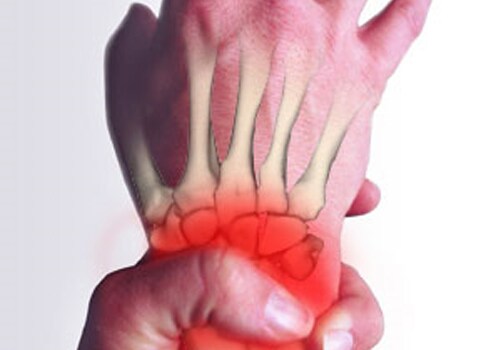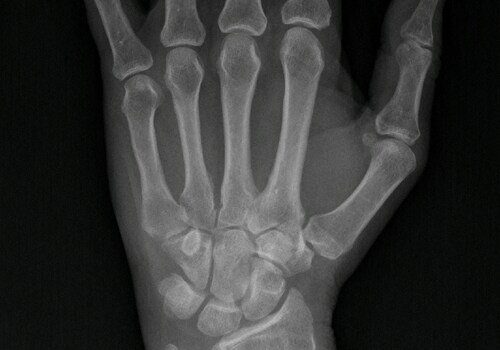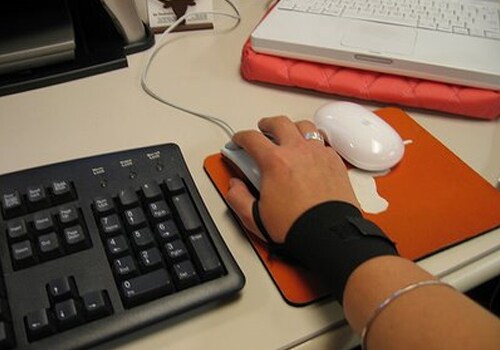-

What is carpal tunnel syndrome?
Carpal tunnel syndrome is a common, painful disorder of the wrist and the hand. The condition occurs mostly in women, but may also affect men. Carpal tunnel syndrome becomes worse with excessive use of the wrist, as with repetitive movements in some occupations or athletic activities.
The carpal tunnel is a passageway in the wrist formed by eight carpal (wrist) bones, which make up the floor and sides of the tunnel, and the transverse carpal ligament, a strong ligament stretching across the roof of the tunnel. Within the carpal tunnel are nine tendons, which are each about the size of a pencil. These tendons join the muscles of the forearm to the fingers and thumb. As the forearm muscles contract, these tendons move toward the elbow and bend the fingers toward the palm.
One other structure within the carpal tunnel is the median nerve, about the size of a pencil, which contains thousands of nerve fibres carrying sensation from the thumb, index and middle fingers, and half of the ring finger. In a healthy wrist, the tendons, median nerve, and transverse ligament work in harmony, but in the case where the carpal tunnel contents may be swollen, the patient can experience a sensation of ‘pins and needles,’ numbness and aching in the fingers, wrist and arm due to increased pressure on the median nerve. -

What is the cause?
Carpal tunnel syndrome is caused by pressure on the median nerve in the wrist. People who use their hands and wrists repeatedly in the same way, e.g. carpenters, tend to develop carpal tunnel syndrome. Pressure on the nerve may also be caused by a fracture or other injury, which may cause inflammation and swelling. In addition, pressure may be caused by inflammation and swelling associated with arthritis, diabetes, and hypothyroidism. Carpal tunnel syndrome can also occur during pregnancy.
-

What are the symptoms?
The symptoms include:
- pain, numbness, or tingling in the hand and wrist, especially in the thumb, index and middle fingers
- increased pain with increased use of the hand, such as while driving or reading the newspaper
- increased pain at night
- weak grip and tendency to drop objects held in the hand
- sensitivity to cold
- muscle weakness
- pain, numbness, or tingling in the hand and wrist, especially in the thumb, index and middle fingers
-

What is the diagnosis?
The doctor reviews the symptoms and does a physical examination:
- he may tap the inside middle of the wrist over the median nerve which may cause pain or a sensation like an electric shock
- he may bend the wrist down for one minute to see if this causes the symptoms
- the doctor may arrange to test the response of the nerves and muscles to electrical stimulation
- he may tap the inside middle of the wrist over the median nerve which may cause pain or a sensation like an electric shock
-

What is the treatment?
If a disease is causing carpal tunnel syndrome (such as rheumatoid arthritis), treatment of the disease may relieve the symptoms. Other treatment focuses on relieving irritation and pressure on the nerve in the wrist. To relieve pressure the following is suggested:
- restricting use of the hand or changing the way of using it
- wearing a wrist splint
- exercises
How long the symptoms of carpal tunnel syndrome last depend on the cause and the response to treatment. The symptoms may disappear without any treatment or may need nonsurgical treatment for relief. Surgery may be necessary to relieve the symptoms if they do not respond to treatment or if they get worse. Surgery usually relieves the symptoms, especially if there is no permanent damage to the nerve.
Symptoms of carpal tunnel syndrome that occur during pregnancy usually disappear following delivery. - restricting use of the hand or changing the way of using it
-

What is the prevention?
The following can be done:
- elevate the arm with pillows while lying down
- avoid activities that overuse the hand
- find a different way to use the hand by using another tool or try to
- use the other hand
- avoid bending the wrists
- elevate the arm with pillows while lying down


















